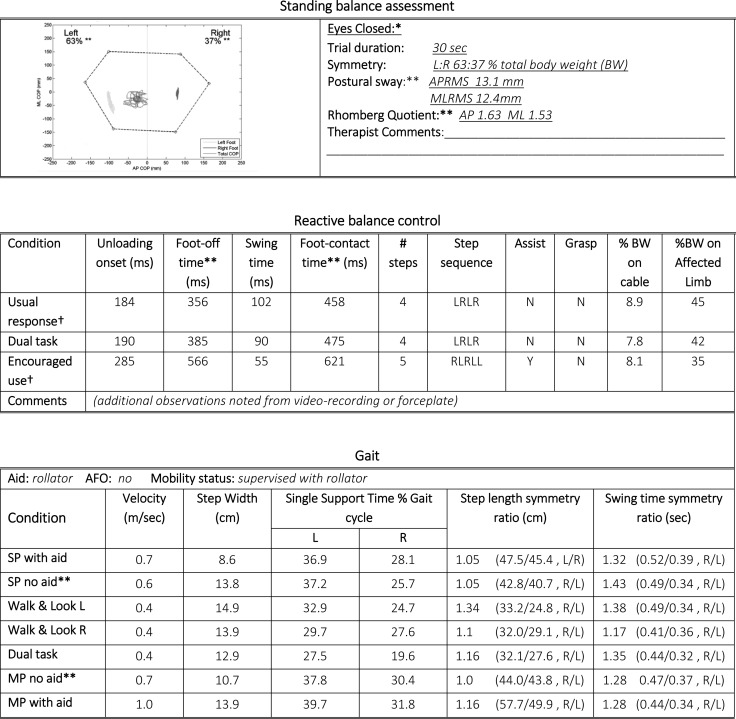Figure 1.
Abridged example of the clinic report.
This report is an example only and does not reflect the full clinic report or represent one individual patient's assessment data. Additional information provided in the report is referenced below. Formatting of the report has also been altered for clarity for the reader.
AP=anteroposterior; ML=mediolateral; RMS=root-mean-square; BW=body weight; L=left; R=right; Y=yes; N=no; SP=self-paced; MP=maximal pace; DT=dual task.
*Additional conditions and data include eyes open, max loading/excursion to right and left, and stand in midline.
**Healthy reference values provided to therapists.
†Five trials completed and data provided for usual response and encouraged-use conditions of reactive balance control assessment.
DT conditions require the patient to perform the task while counting backwards by sevens; cognitive task may be altered depending on the patient's cognitive–communicative deficits. Rhomberg quotient provided represents the value for eyes closed divided by eyes open, expressed in both AP and ML directions. Graphs of step-to-step variability values (step length and time) across conditions are also provided.

